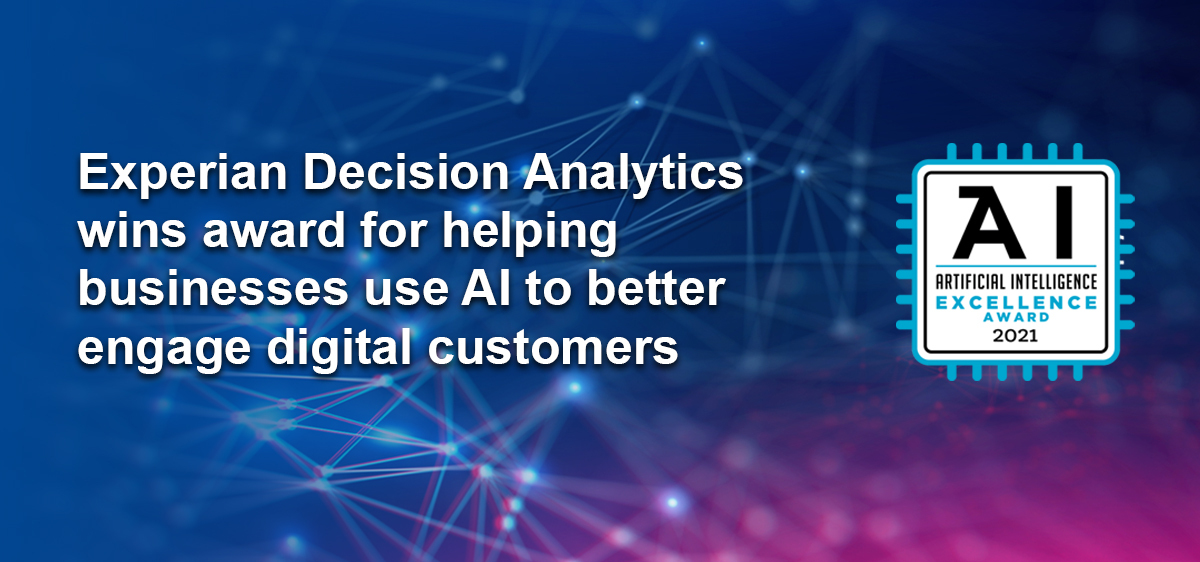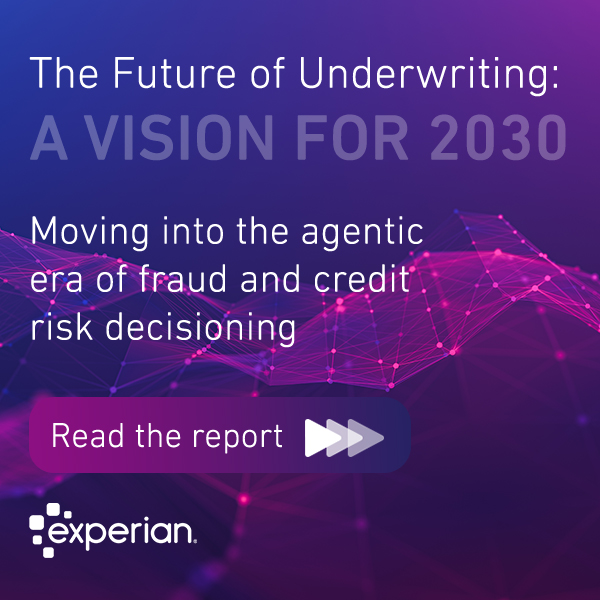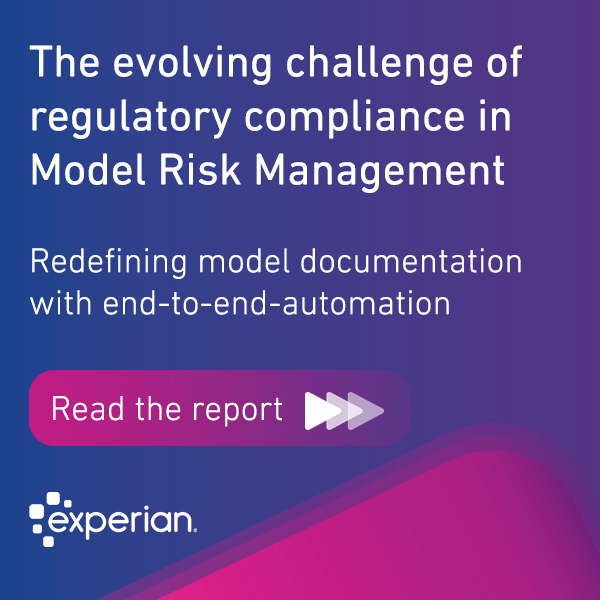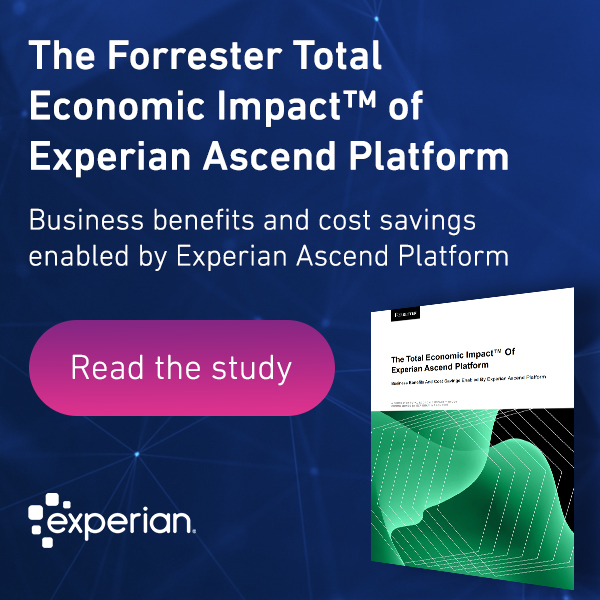Tag: AI

Did you miss these December business headlines? We’ve compiled the top global news stories that you need to stay in-the-know on the latest hot topics and insights from our experts. How are companies responding to consumer behavior? Nasdaq Trade Talk's Jill Maladrino talks to Steve Wagner, Global Managing Director of Decision Analytics, about the increase in online activity over the course of the pandemic, how inflation can impact brand loyalty, and why businesses need to respond to consumer demand with better customer experience and fraud prevention. Q&A: Why the increased use of digital transactions is here to stay David Bernard, SVP of Strategy, Marketing and Digital, talks to Digital Journal about how businesses should be approaching the increase in digital transactions using advanced analytics and decisioning technologies to improve the digital customer experience and grow their businesses. How criminals are using synthetic identities for fraud Dark Reading's The Edge talks to David Britton, VP of Industry Solutions, about why businesses must improve their fraud detection and prevention protocols to detect synthetic identities and ensure that they are protecting their consumers' personal information. Latest retail trends: AI is on the up, consumer loyalty is heading down Digital Journal looks at Experian's latest research that uncovers how businesses are incorporating machine learning and artificial intelligence into everyday operations and investments in response to an upward trend in online activity and a downward trend in customer loyalty. Stay in the know with our latest research and insights:

What increasing expectations of the digital customer experience mean for your business and technology investment Economic recovery and waning customer loyalty are creating new opportunities 59% of businesses globally say they’re mostly or completely recovered from the pandemic 61% of customers engaging with the same companies they did a year ago, down 6% in twelve months Data, analytics and decisioning technologies help provide customers with a secure and convenient digital experience Consumers are prioritising security, privacy and convenience when engaging online 75% of consumers feel the most secure using physical biometrics Scalable software solutions give companies of all sizes the ability to better manage risk and digitally transform the customer experience 50% of businesses are exploring new data sources 7 in 10 businesses say they’re frequently discussing the use of advanced analytics and AI, to better determine consumer credit risk and collections 76% of businesses are improving or rebuilding their analytics models “Dwindling customer loyalty along with heightened customer expectations and increased competition could mean potential revenue loss or gain. Businesses must find integrated credit and fraud solutions to improve digital engagement and customer acquisition.” Steve Wagner, Global Managing Director, Decision Analytics, Experian We surveyed 12,000 consumers and 3,600 businesses across 10 countries as part of a longitudinal study that started in June 2020 Read the full report to find out where businesses are focusing their investments

How is Covid-19 impacting digital consumer behaviour and business strategy? To find out, we surveyed 12,000 companies and 3,600 businesses across 10 countries as part of a longitudinal study that started in June 2020. Watch the video for an overview of the results or download the full report. Stay in the know with our latest research and insights: This is what we discovered: Heightened consumer expectations is paving the way for digital innovation. 59% of businesses are mostly or completely recovered from the pandemic. And 47% of consumers are somewhat or completely recovered. As economic stability returns and spending resumes. Consumers are most concerned with online security and convenience. Businesses are leveraging advanced decisioning technology to simultaneously meet security and convenience expectations. Innovative decisioning technologies across fraud and credit are improving the customer experience and levelling the playing field. With 42% of consumers happy to share personal information and adoption of AI increasing significantly across businesses – from 69% in 2020 to 74% in 2021. AI, machine learning, and advanced analytics are helping businesses of all sizes to improve: Digital decisioning Credit risk management Fraud prevention and more. Digital investment has become a differentiator - in the race to improve digital customer experience there is no standing still. Those lagging behind can lose customers and opportunities. That’s why businesses across the globe are prioritising digital engagement and digital acquisition. With 76% improving analytics models and over 60% planning to increase fraud detection and credit risk analytics budgets. Since the start of the pandemic, there has been a 25% increase in digital transactions globally. Online activity and high consumer expectations are here to stay. By adopting digital solutions that separate them from the competition, businesses can thrive in 2022. Watch the video for an overview of the results or download the full report.

It’s no secret that the pandemic created a level of economic uncertainty that makes it incredibly tricky for lenders to understand their risk on a customer-by-customer basis, and therefore its impact on decision management. It’s no wonder they’re uncertain; the customers themselves are just as unsure. According to the Global Decisioning Report 2021, one out of every three consumers worldwide are still concerned about their finances even as the second anniversary of the COVID-19 outbreak approaches. While some consumers were able to easily work from home during the pandemic, others suffered job losses, cut wages, or increased expenses due to lost childcare or having to care for a loved one. As the impact of the pandemic continues to be felt – especially as government support programs begin to conclude – financial institutions will have to figure out how to navigate the uneven recovery. By leveraging advanced data and analytics, financial institutions can better understand their risk and improve their decision management. In turn, many financial institutions are creating predictive models to target their best customers and reduce exposure to unnecessary risk. However, a model is not always the end-all, be-all solution for reducing risk. Here’s why: a model requires of the right data in order to work effectively. If there isn't a data sample over a long enough time frame, the risk of creating blind spots that can leave businesses on the hook for unexpected losses can be high. Also, there will always be the need for a strategy even with a custom model. A global financial institution likely has more than enough data to create accurate, powerful custom models. However, financial institutions like local or regional credit unions or fintechs simply don't have enough customer data points to power a model. In addition, many outsourced model developers lack the specific financial industry domain expertise required to tweak their models in a way that accounts for the nuances of regulations and credit data. Finally, the pandemic continues to change the economic picture for customers by the minute, which can make a model designed for today outdated tomorrow. When a strategy makes more sense For many financial institutions, it can make more sense to focus on building out a decision management strategy instead of leveraging custom models. While a model can provide a score, it can’t tell you what to do with it. By focusing on a decision management strategy, you can leverage other information and attributes about different customer segments to inform actions and decisions. In an ideal world, of course, the choice wouldn't exist between a model and a strategy. Each has an important role to play, and each makes the work of the other more effective. However, strategy is often the smart place to start when beginning an analytics journey. The benefits of starting with strategy include: Adaptability: A strategy is much easier to change than a model. While models often have rigorous governance standards, a strategy can be adapted with relatively little compliance impact. This helps businesses adapt to changes in goals, vision, or shifts in the marketplace in a bid to attract the ideal customer. In a world that changes by the day, the ability to adjust risk tolerance on the fly is crucial. Speed: A custom model can take weeks or even months to build, test, deploy, and optimize. As a result, this can put businesses behind in analytics transformation while leaving them unnecessarily exposed to risk. On the other hand, a strategy can be developed and deployed in a relatively rapid manner, and then adapted on an ongoing basis to reflect the realities on the ground. Consistency: A strategy helps drive improvement across operations by allowing team members to ‘sing from the same songbook,’. In smaller organizations where work is still done manually by a handful of people, a strategy allows for automated processes like underwriting so businesses can scale decisioning. Strategy or model? Three questions to consider Do you need a strategy or a model? Again, in an ideal world the answer is ‘both’ due to the unique role each plays, but in the real world it depends on the institution. Here are three questions to ask in order to determine where to focus time and resources: “How different are the people I am lending to than the national average?” If the institution is lending to segments that look just like everyone else, leveraging existing third-party data sources will allow the use of generic models. In this case, the focus would be on using those generic models to power the strategy. However, for businesses that serve a niche population, a national average might skew results; in this case, it may make more sense to build a custom model. “What is my sample size?” Take a close look at the number of applications coming in each month, quarter, or year. In addition, compare it to periods dating back years to understand growth rates. This will indicate the if the data inflow required exists to power a custom model. Don’t forget to analyze how many of those applications eventually become delinquent; because some smaller financial institutions have conservative policies, they may have low delinquency rates. While this is good for the institution’s bottom line, it can make it difficult to build a model that will be able to detect future delinquencies. Therefore, even a large application sample size might not have enough variance to create an accurate custom model. “What are my long-term future goals?” This is the most difficult question to sometimes answer, as many financial institutions remain focused on navigating today’s challenges. As market conditions change, goals naturally adapt. That said, some goals might require custom models in order to effectively achieve the business vision. For example, if the plan is to enter new markets, create new partnerships, or offer new products that are different than what has been done in the past, a custom model could provide a more accurate understanding of potential risk. Our research also shows that nearly half of businesses report that they are dedicating resources to enhancing their analytics, with one-third of businesses planning on rebuilding their models from scratch. Rapid changes in consumer needs and desires means there’s less confidence in consumer risk management analytics models that are based on yesterday’s customer understanding. By focusing on a decisioning strategy, businesses can be empowered to effectively leverage analytics today to take action while creating a steppingstone for more sophisticated model-based analytics tomorrow. Stay in the know with our latest research and insights:

What is a deepfake? Fraudsters can distort reality by manipulating existing imagery to replace someone’s likeness. How does AI deepfake technology work? Artificial neural networks are computer systems that recognise patterns in data. A deepfake can be created by feeding hundreds of thousands of images into the artificial neural network, which tarins the data to identify and reconstruct face patterns. Adoption of more advanced AI means less images and videos are needed allowing fraudsters to use these tools at scale. How to detect a deepfake Jerky movement. Shifts in lighting from one frame to the next. Shifts in skin tone. Strange blinking or no blinking at all. Poor lip synch with the subject's speech. What businesses can do Use emerging authentication technology in video. Deploy AI and machine learning to detect deepfakes. Apply a layered fraud defence strategy to better identify deepfakes.

Innovation in fraud detection and prevention is key in today's ever-evolving digital landscape. Juniper Research, a research firm that specializes in identifying and appraising new high growth market sectors, recognized organizations and platforms that drive innovation and growth in the banking, fraud and security, and retail and payments through their Future Digital Awards. The firm awarded Experian as the Platinum Winner for Fraud Detection and Prevention Platform (CrossCore™) and the Gold Winner for the Artificial Intelligence Platform (Ascend Intelligence Services™). Keeping more consumers safe According to this year's Global Identity and Fraud Report, more than half of businesses will continue to invest in fraud prevention solutions over the coming year to combat several types of fraud: new account opening fraud, account takeover fraud, and other types of identity fraud, with at least 57 percent of businesses report higher losses from account opening and account takeover fraud. Identity-related fraud has evolved towards more automation, in the form of scripted attacks and bot attacks, as well as more sophisticated phishing attacks. The speed at which fraudsters adapt to new technology and behavior has always been a problem, and with sudden and unpredictable change, reacting quickly with new fraud strategies has never been more important for businesses looking for ways to safeguard digital transactions. CrossCore™, launched in 2016, is used globally to connect identity and fraud capabilities. The system combines robust risk-based authentication, identity proofing and fraud detection into a single, state-of-the-art cloud platform to make real-time risk decisions throughout the customer lifecycle. Typically, businesses need to move through validation, contract and then integration in order to combat fraud – making for a long, tedious and expensive process. CrossCore pre-qualifies fraud and intelligence services so that businesses can choose how they want their transactions to be processed and which fraud and identity services they want to use. The platform is designed to help businesses instantly identify good customers, catch fraud and enhance the customer experience. Juniper Research’s Future Digital Awards for Fintech & Payments recognized Experian’s CrossCore as the Platinum Winner for the Fraud Detection and Prevention Platform. The recognition comes at a time CrossCore and AIS platforms are helping businesses all over the world combat fraud and maintain a safe digital experience for their customers. This recognition underscores the commitment to using advanced capabilities in data, analytics and technology to bring innovative fraud solutions to the market, enabling businesses outpace fraud while making it safer for consumers to engage with them digitally. Providing better digital service The acceleration to digital has caused financial institutions to quickly evolve and improve their processes including reducing time for loan approvals, access to more financial produce and new innovative payment methods. What is most important is that businesses focus on more on advanced technologies for lending. Launched in January 2021, AIS provides financial institutions and other lenders with AI solutions delivered rapidly and digitally, resulting in better business outcomes at every stage of the customer lifecycle. AIS is a one-stop-shop of building, documenting, deploying, monitoring, and retraining analytics, all on the same AI platform. The system allows businesses to process data with extreme speed and efficiency in a streamlined approach to detect and monitor identity models and strategies. Juniper Research’s Future Digital Awards for FinTech & Payments also recognized Ascend Intelligence Services™ (AIS) as the Gold Winner for the AI Platform. By creating accessible AI solutions for our business clients, people engage with their favorite financial brands in a more meaningful way across the customer lifecycle, truly democratizing advanced analytics. Learn more about Ascend Intelligence Services and CrossCore. Stay in the know with our latest research and insights:

Getting the most out of your AI investment Work backward from impact - give yourself room to experiment Hire the best data talent and partner with the right provider Take a holistic approach - don't just focus on performance AI allows businesses to process sheer volumes of data and multi-tiered models with extreme speed and efficiency. But, scaling AI to meet shifting business demand can be challenging. Experian's Ascend Intelligence Services expertly partners with organizations to build custom, scalable AI and ML solutions to meet those requirements. Listen to Shri Santhanam advise on how to scale AI

Why digital acceleration has created more opportunities for deepfake fraud tactics like voice cloning and what businesses can do about it Digital acceleration has placed information and services in the hands of the masses, connecting individuals on a global level like never-before, and in turn making them increasingly dependent on devices in their daily lives. The argument for technology as an equalizer in society is a strong one. Most people have a voice and a platform, producing millions of virtual interactions and recordings every day. But in this digital world of relative anonymity, it is difficult to know who is really on the other side of the connection. This uncertainty gives fraudsters an opening to threaten both businesses and consumers directly, especially in the realm of deepfakes. What is a deepfake? Deepfakes are artificially created images, video and audio designed to emulate real human characteristics. Deepfakes use a form of artificial intelligence (AI) called deep learning. A deep learning algorithm can teach itself how to solve problems using large sets of data, swapping out voices and faces where they appear in audio and video. This technology can deliver extraordinary outcomes across accessibility, criminal forensics, and entertainment, but it also allows a way in for cybercriminals that hasn’t existed until now. Deepfake fraud tactics A principal tactic among deepfake fraud is voice cloning – the practice of taking sample snippets of recorded speech from a person and then leveraging AI to understand speech patterns from those samples. Based on those learnings, the modeler can then use AI to apply the cloned voice to new contexts, generating speech that was never spoken by the actual voice owner. For businesses, deepfake tactics such as voice cloning means access to points of vulnerability in authentication processes that can put organizations at risk. Fraudsters may successfully bypass biometric systems to access areas that would otherwise be restricted. For government leaders, it can mean the proliferation of misinformation – a growing area of concern with huge repercussions. For consumers, the risk of falling victim to scams involving access to personal information or funds is particularly high when it comes to voice cloning. How to prevent deepfake fraud 1. Vigilance: Stay on top of sensitive personal information that could be targeted. Fraudsters are always at work, relentlessly seeking out opportunities to take advantage of any loophole or weak spot. Pay close attention to suspicious voice messages or calls that may sound like someone familiar yet feel slightly off. In an era of remote work, it is important to question interactions that can impact business vulnerabilities – could it be a phishing or complex social engineering scam? 2. Machine learning and advanced analytics: Deepfake fraud is an emerging threat, which leverages the development and evolution of the technology that fuels it. The flip side is that businesses can in fact use the same technology against the fraudsters, fighting fire with fire by deploying deepfake detection and analysis. 3. Layered fraud prevention strategy: Leveraging machine learning and advanced analytics to fight deepfake fraud can only be effective within a layered strategy of defense, and most importantly, at the first line of defense. Ensuring that the only people accessing the points of vulnerability are genuine means using identification checks such as verification, device ID and intelligence, behavioral analytics, and document verification simultaneously to counter how fraudsters may deploy or distribute deepfakes within the ecosystem. As with many types of fraud, staying one step ahead of the fraudsters is critical. The technology and the tactics continually evolve, which may make the countermeasures on the table right now obsolete, however the fundamentals of sound risk management, with the right layered approach, and a flexible and dynamic solution set, can mitigate these emerging threats. Stay in the know with our latest research and insights:

How elite leaders train analytics teams to unearth and convey the highest quality data insights and better manage risk. It's surprising how much of an art the effective use and analysis of qualitative data in the business world truly is. Too often, data scientists are tasked with turning raw data into insights without ever actually being taught the true art of identifying and reporting the most meaningful insights that address the problems at hand. Instead, data teams often produce reams of summarized information without drawing any useful conclusions – falling short of discovering deeper truths hidden within. I've been fortunate to work for, with, and manage data scientists of various titles, abilities, and personalities over the years. I've found that the true "artists" in this profession can combine technical proficiency, tactical communications with an affinity for the science, and excellent detective skills. Objectivity in Data Analysis As Arthur Conan Doyle wrote in Sherlock Holmes says, "I never guess. It is a capital mistake to theorize before one has correct data. Insensibly one begins to twist facts to suit theories, instead of theories to suit facts." As data scientists, we're often sent down a singular path to analyze data to support a narrative. Data is inherently objective; analyzing with subjective intent typically leads to ineffective results when put into practice. However, with the proper guidance, probing questions, and some detective work, scientists can uncover deeper insights leading to effective outcomes in the form of actionable intelligence and forecasts. Early in my career, I was tasked by a business partner to pull data that demonstrated higher customer satisfaction scores for a customer call center. Requests like this – "just get me the data" – are (unfortunately) common. In this case, however, he was open to discussing the "why" behind his ask. As a result, this incident proved a learning opportunity for me on how to satisfy a requirement while simultaneously producing information explicitly valuable to the organization. I've often had to find workable paths through figurative minefields with mandates such as "just get me the data" or "make the numbers work." During this scenario, I diligently asked ancillary questions to build into the data modeling outside the required parameters. I intended to generate value beyond the pre-conceived conclusion I was tasked with finding data for. The resulting report yielded compelling insights, actionable intelligence, and a clear forecasting plan. In this example, it was found that clients had higher satisfaction scores for reasons other than what we initially thought and had nothing to do with the seven million dollars my business partner spent on branding, training, etc. The solution was simple: move a training location. Tactical communication skills were necessary in this scenario as I had to tell my business partner where the efficiency gains were actually coming from and where future budgets could be more effective. Doing so was the catalyst behind an alternative business strategy and focus, resulting in a much more significant impact on our customer relationships. Asking the Right Questions The true purpose of analytics is to discover, interpret, and communicate meaningful patterns in data and the connective tissue between. Most importantly, it exists to aid in effective decision-making within an organization. Under that premise, I teach my teams to be communicative, especially during planning stages and consistently ask questions of the data throughout the analytical process. It's always imperative to identify the specific addressable problems our clients are trying to solve while frequently conversing with them to understand what actions and/or decisions the analysis is meant to inform. This strategy produces more profound results and focuses on solving a problem – not endlessly cycling through various cuts of the same data. As a result, the team will be primed to evaluate results objectively and be ready to dig beyond surface-level data, capturing vital insights hidden deep within. Using the Right Tools Nobody does arithmetic by hand anymore. A data scientist's best friend should be sophisticated model development software that leverages AI and Machine Learning. The efficiency they provide enables us to focus on areas where human intelligence is best applied, such as interpreting model performance within the context of how that model will be used. Elite leaders know how to leverage the right tools to maximize speed and efficiency. Ignoring the sheer processing power of cloud computing and other advancements places your organization at a distinct competitive disadvantage in performance and accuracy. I shudder when thinking about the dark days when it would take six to nine months to develop a new model. It reminds me of watching NASA mathematicians do advance calculations with slide rules in movies like Apollo 13 and Hidden Figures. Strategy optimization is a perfect example; how do I ensure that my portfolio is holistically delivering the highest value within risk constraints? I could grow my portfolio endlessly, but that likely means taking on too much back-end risk. Instead, mathematical optimization can be used to determine the right balance between growth, return, and risk. To do this successfully requires a vast amount of processing power. Gradient boosting, a Machine Learning technique that helps build far more accurate models, is another excellent example of what's possible with modern technology. Some of the operations we perform daily were literally not possible 10-15 years ago as we did not have access to such processing power. Thus, we're able to solve problems not previously solvable. What has also changed is our ability to process volumes of data and highly complicated, multi-tiered models, with extreme speed and efficiency. Organizations don't need to take all of this on, as companies like Experian effectively provide data science services where AI/ML solutions are delivered rapidly and digitally. A well-equipped, efficient, curious, and well-trained data team whose data analysis consistently helps corporate leaders make informed decisions is true art. The answers they provide to challenging business questions is their magnum opus. Read about topics related to this article Stay in the know with our latest research and insights:

Shri Santhanam, EVP and Global Head of Analytics and AI, talks to Ganesh Padmanabhan from Stories in AI about why he hopes the changing world of lending will lead to better financial inclusion. "The whole digital revolution in lending means that financial institutions are scrambling to make the process much more seamless, reduce time for approvals, let consumers have access to different financial products, and have innovative products like buy now pay later. But underneath it all, you have to get more nuanced and more sophisticated about the methodologies that you use for lending. And this is where AI and ML come in." Expect to hear discussions about the future of finance, how to drive impact by leveraging data analytics and AI, frameworks for setting up and institutionalizing an AI center of competence for a large organization, and how to scale data science efforts through hiring, promoting from within, and setting up the right structure and processes to make it happen. "Experian for over 100 years now has leveraged the power of data. We’ve been a very powerful data company. We’ve used that data to improve the lives of consumers and improve how businesses make decisions. Fundamentally, we’ve had a set of pioneers who before Big Data tech was introduced to the world, figured out that having a data marketplace or collecting high quality data on consumer lending will be of value, and that’s been the core of our business. That dynamic is changing. We see a lot of value migrating what we call up the stack. So from purely data to actually the decisions that are made with the data, to products and services in the data." Related content

Experian is honored to be recognized as a winner of the Artificial Intelligence AI Excellence Award by Business Intelligence Group. Experian was recognized for its credit and collections decisioning solution, PowerCurve, which features intelligent agent-customer assist that processes complex, regulated, and subjective interactions with customers, revolutionizing how they digitally interact, on their terms, with lenders. This AI virtual assistant offers customers 24/7 access to support from their credit provider - on a financially sensitive transaction such as collections. We embedded over 30 years of collections knowledge and experience delivered to major clients across the globe into a credit risk decision management solution that delivers this domain expertise, data, analytics, decisioning, and workflow to clients of all sizes via cloud technology. Harnessing the power of AI has enabled lenders to easily connect with customers on their terms in a fair and transparent way, and to recover losses in an operationally efficient way but also improve customer satisfaction. When’s the last time you heard a customer share a positive story about collections? This digital self-service channel allows customers to engage with a lender on their terms and allows the lender to fulfill key objectives for quickly recovering losses, using the company’s strategic parameters for segmentation and treatment paths. The intelligent agent customer-assist feature within PowerCurve continuously learns which distinguishes it from the traditional decision-tree structure of a chatbot. It remembers interactions and learns from them, has short-term and long-term conversation goals, and recognizes small talk. It treats customers fairly and transparently. The result feels more empathetic and allows for an always-on and real-time consumer interaction. It can also offer a future-forward benefit to lenders, by allowing their employees to strategically focus on other areas of the business, potentially increasing the capacity for more credit products and services innovation. This Business Intelligence Group awards program sets out to recognize those organizations, products and people who bring Artificial Intelligence (AI) to life and apply it to solve real problems. Related stories: Going the last mile: Improving the End-to-End Digital Customer Journey Technology today: Focus on innovation drives award-winning, AI-powered consumer lending Podcast: Driving product vision with the customer front and center, a software architect’s view

As consumers shop, bank, and pay online during the global pandemic, steps are being taken to return to more business as usual. But, what should businesses expect around consumer digital preferences post-pandemic? Steven Wagner, Global Managing Director of Decision Analytics, recently spoke with Jill Malandrino of Nasdaq Trade Talks about recent survey findings and overall trends to watch out for. Here are highlights of that discussion: Research trends indicate a continued and persistent surge in online transactions and digital payment mechanisms The current environment has been a tipping point for consumer trust in online transactions A secure environment through continuous and passive authentication is key to meeting online consumer demand There is a direct correlation between consumer trust in their online environment and their willingness to provide data to secure a transaction Businesses need to invest in AI that provides a good consumer experience -- from chatbots to machine-learning models that impact consumer treatment in real-time Watch the full episode now: Related stories: New research available: 2021 Global Insights Report Parting ways with old forms of managing credit risk online Why the new era of customer experience includes passive authentication




